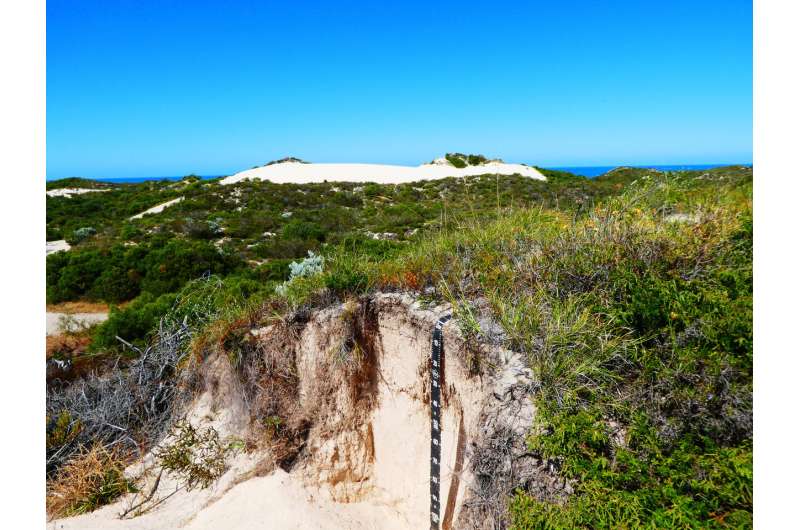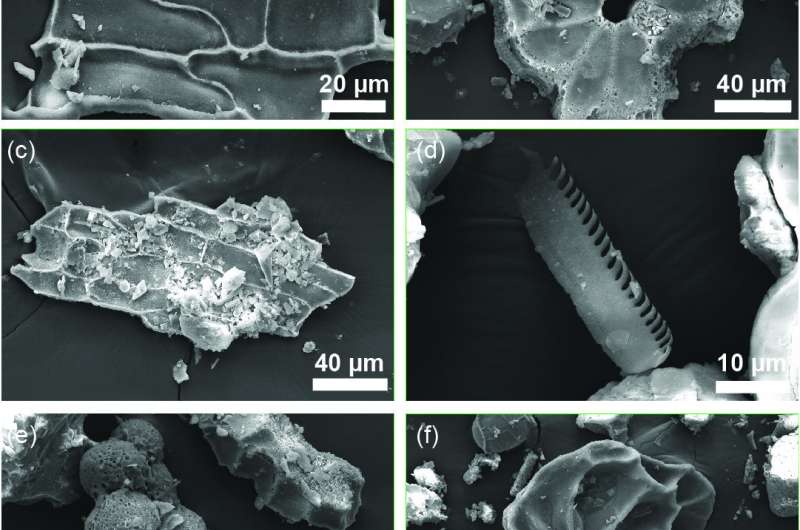Shrubland vegetation of the Sandplains in Southwest Australia. Credit: Félix de Tombeur
An international team of researchers has learned more about the global silicon cycle by studying ancient soil samples in Australia. In their paper published in the journal Science, the group describes their study of soil of different ages and what they learned about it. Joanna Carey with Babson College, has published a Perspective piece in the same journal issue outlining the connection between the carbon and silicon cycle and the work done by the team in this new effort.
Silicon is the second-most abundant element in Earth's crust and it plays a vital role in plant life, both on land and in the sea. Silicon is used by plants in tissue building, which helps to ward off herbivorous animals. In the ocean, phytoplankton consume enormous amounts of silicon; they get a constant supply courtesy of rivers and streams. And silicon winds up in rivers and streams due to erosion of silicon-containing rocks. Land plants also use silicon. They get it from the soil. In this new effort, the researchers began by noting that the terrestrial biogeochemical cycling of silicon (how it moves from plants back to the soil and then into plants again) is poorly understood. To gain a better understanding of how it works, they ventured to a part of Western Australia that, unlike other parts of the world, has not been impacted by Pleistocene glaciations. The soil there gave the researchers a look at the silicon cycle going back 2 million years.
In analyzing soil samples from multiple depths, the researchers were able to compare old and comparatively new soil. They determined that as the soil aged, it contained less silicon—it had become depleted likely by rainwater carrying it away. But the newer soil above it had more silicon as rock broke down, releasing its silicon content. The researchers suggest their findings indicate that silicon cycling shifts from geochemical to biological control over time, with plants as the regulating element. They further suggest that such cycling allows plants to absorb as much silicon as they need, even in soil that has been depleted in other ways. Carey adds that more knowledge about how the silicon cycle works should lead to a better understanding of the carbon cycle, because the two are linked in many ways.
Phytoliths found in the soils of the Sandplains in Southwest Australia. Phytoliths take the form of organic tissues in which they precipitate, creating a wide range of wonderful structures. Credit: Félix de Tombeur
More information: F. de Tombeur et al. Plants sustain the terrestrial silicon cycle during ecosystem retrogression, Science (2020). DOI: 10.1126/science.abc0393
Joanna Carey. Soil age alters the global silicon cycle, Science (2020). DOI: 10.1126/science.abd9425
Journal information: Science
© 2020 Science X Network
























